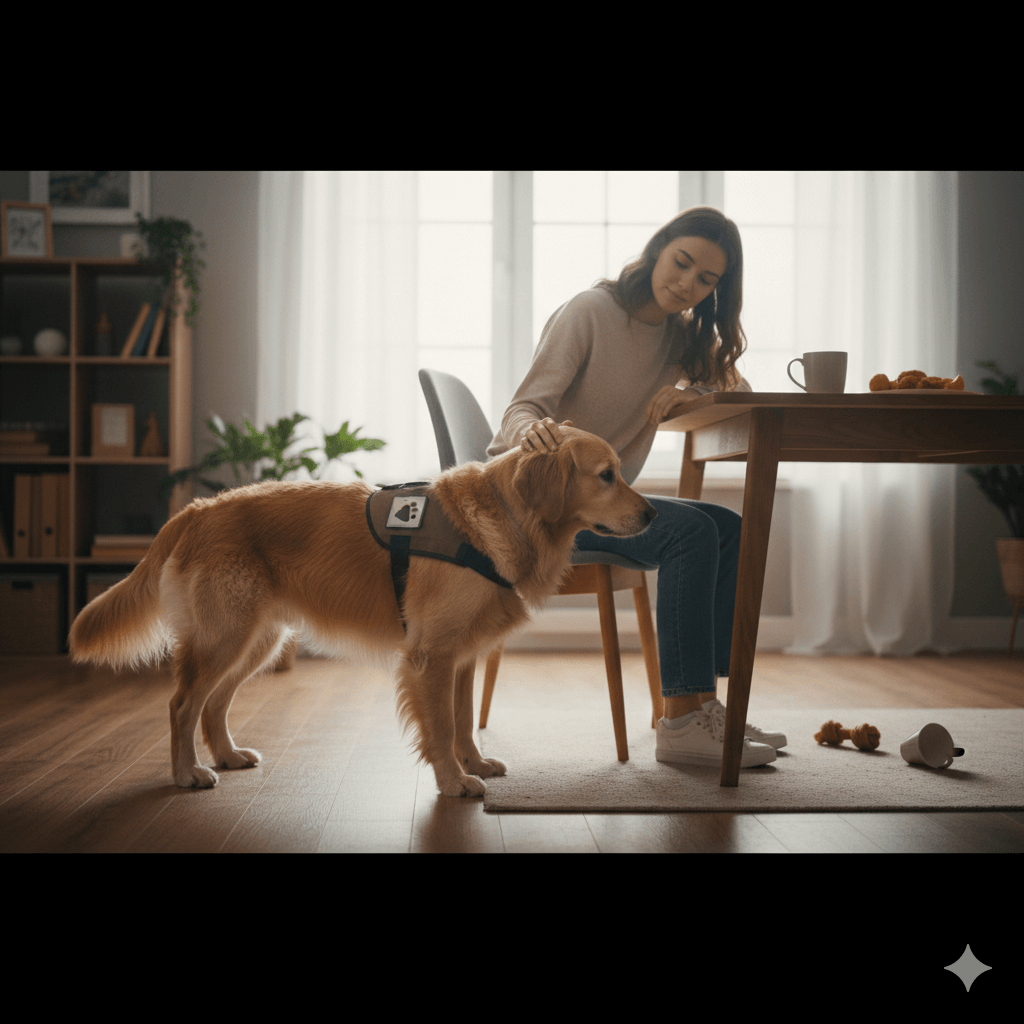Spayed Dog Bleeding Years Later: What Every Pet Owner Should Know
If you’ve noticed your spayed dog bleeding years after the surgery, it’s natural to feel concerned. Spaying is a common procedure intended to prevent reproductive issues and certain health risks in female dogs. However, unexpected bleeding can occur for various reasons, even in spayed dogs. While it may not always indicate a serious problem, it’s essential to understand what might be causing this symptom and when to seek veterinary care. In this blog post, we’ll explore potential causes, symptoms to watch for, and steps you can take to ensure your dog’s health and well-being.
Possible Causes of Bleeding in a Spayed Dog Years Later
Bleeding in a spayed dog years after the surgery can stem from a variety of causes. While some are benign, others may require immediate attention. Here are some potential explanations:
Uterine Remnant Syndrome: Sometimes, a small piece of uterine tissue is accidentally left behind during the spay surgery, which can lead to infection or bleeding.
Urinary Tract Infection (UTI): Blood in the urine caused by a UTI can mimic vaginal bleeding and is relatively common in dogs.
Bladder Stones or Crystals: These can irritate the bladder lining, causing blood to appear in the urine.
Hormonal Imbalance: Even spayed dogs can experience hormonal changes that may cause abnormal discharge or bleeding.
Tumors or Growths: Benign or malignant growths in the reproductive tract or urinary system can sometimes cause bleeding.
Understanding these potential causes is the first step toward identifying the issue and seeking appropriate treatment. Always consult your veterinarian if you notice unexplained bleeding in your dog.
Signs That Your Spayed Dog Needs Veterinary Attention
While some cases of bleeding may resolve on their own, others can indicate a serious underlying condition. Here are signs that warrant an immediate visit to the vet:
Excessive Bleeding: If the bleeding is heavy or persistent, it could signal a more severe issue like an infection or tumor.
Foul Odor: A strong, unpleasant smell accompanying the bleeding may indicate an infection or abscess.
Lethargy or Weakness: If your dog seems unusually tired or uninterested in activities, it could point to systemic issues like anemia or infection.
Changes in Urination: Straining to urinate, frequent accidents, or blood in the urine are red flags that need prompt attention.
Behavioral Changes: Restlessness, whining, or aggression may indicate pain or discomfort related to the bleeding.
If you notice any of these symptoms, don’t delay in seeking veterinary care. Early diagnosis and treatment can make a significant difference in your dog’s recovery.
Check this guide 👉Does Spaying Calm a Dog Down? Best 7 Expert Tips!
Check this guide 👉Infected Swollen Spay Incisions in Dogs: Best 7 Health Tips!

Potential Causes of Bleeding | Symptoms to Watch For |
|---|---|
Uterine Remnant Syndrome | Bloody discharge, fever, lethargy |
Urinary Tract Infection (UTI) | Blood in urine, frequent urination, pain |
Bladder Stones or Crystals | Straining to urinate, blood in urine |
Hormonal Imbalance | Irregular discharge, behavioral changes |
Tumors or Growths | Lumps, swelling, excessive bleeding |
Steps to Take If Your Spayed Dog Is Bleeding
If your spayed dog starts bleeding unexpectedly, there are several steps you can take to address the situation before consulting your veterinarian. Here’s what to do:
Stay Calm: Keep yourself composed to avoid stressing your dog further during this time.
Observe the Bleeding: Note the color, consistency, and amount of blood to provide accurate details to your vet.
Check for Other Symptoms: Look for signs of pain, swelling, or behavioral changes that could indicate an underlying issue.
Keep Your Dog Comfortable: Provide a quiet space where they can rest and avoid strenuous activities.
Call Your Veterinarian: Schedule an appointment as soon as possible to determine the cause and receive professional guidance.
Taking these steps ensures that you’re prepared to act quickly and responsibly while awaiting professional advice.
Preventive Measures to Avoid Health Issues in Spayed Dogs
While not all causes of bleeding in spayed dogs can be prevented, taking proactive measures can reduce the risk of complications. Here are some tips to keep your dog healthy:
Regular Vet Check-Ups: Routine examinations can catch potential issues early before they escalate into serious problems.
Monitor Hydration: Ensure your dog drinks enough water to support urinary tract health and prevent infections.
Maintain a Balanced Diet: A nutritious diet supports overall health and reduces the risk of urinary stones or infections.
Watch for Behavioral Changes: Pay attention to subtle shifts in behavior, appetite, or activity levels, as these can indicate underlying issues.
Keep Up with Preventive Care: Follow your vet’s recommendations for vaccinations, parasite control, and dental hygiene.
By prioritizing preventive care, you can minimize the chances of your spayed dog experiencing unexpected bleeding or other health concerns.
Debunking Myths to Better Understand Your Dog’s Health
There are many misconceptions about spaying and its long-term effects on dogs. While spaying is a routine procedure, misunderstandings can lead to confusion when unexpected symptoms like bleeding occur. Here are some common myths and the truth behind them:
Myth: Spaying completely eliminates reproductive issues.
Reality: While spaying significantly reduces reproductive problems, conditions like uterine remnant syndrome can still occur.Myth: Spayed dogs cannot develop hormonal imbalances.
Reality: Although rare, hormonal changes can still happen and may cause abnormal symptoms like bleeding.Myth: Bleeding after spaying is always normal.
Reality: Any bleeding years after spaying is not normal and should be evaluated by a veterinarian.Myth: Older dogs don’t need regular vet check-ups after being spayed.
Reality: Regular vet visits are crucial for catching potential issues early, regardless of age or spay status.Myth: Spaying guarantees a longer, healthier life without complications.
Reality: While spaying has many benefits, it doesn’t eliminate all health risks, and vigilance is still necessary.
By understanding these misconceptions, you can make informed decisions about your dog’s care and recognize when something requires attention.
How to Comfort Your Dog When They’re Unwell
When your spayed dog experiences unexpected bleeding or other health issues, providing emotional support is just as important as addressing the physical symptoms. Dogs are sensitive to their owner’s energy and emotions, so staying calm and reassuring can help them feel more secure. Here are ways to comfort your dog during this time:
Maintain Routine: Stick to their usual schedule for feeding, walks, and playtime to provide a sense of normalcy.
Offer Gentle Affection: Petting, cuddling, or simply sitting with your dog can reassure them that they’re safe and loved.
Create a Calm Environment: Reduce noise and stressors in your home to help your dog relax and recover.
Use Positive Reinforcement: Reward calm behavior with treats or praise to encourage a positive mindset.
Stay Patient: Recovery or diagnosis may take time, so patience and consistency are key to supporting your dog emotionally.
Your presence and care can make a significant difference in how your dog copes with health challenges. Remember, they rely on you for comfort and reassurance.
Supporting Your Aging Dog’s Health After Spaying
As dogs age, their bodies undergo changes that can increase the likelihood of health issues, even if they’ve been spayed. Providing specialized care for senior dogs ensures they remain comfortable and happy in their golden years. Here are some tips for long-term care:
Adjust Their Diet: Senior dogs often require food formulated for their changing nutritional needs, such as lower calories and higher joint support.
Monitor Weight: Obesity in older dogs can exacerbate health problems, so keep an eye on their weight and activity levels.
Increase Veterinary Visits: Older dogs benefit from biannual check-ups to catch age-related issues early.
Provide Joint Support: Supplements like glucosamine or omega-3 fatty acids can help maintain mobility and reduce discomfort.
Watch for Subtle Changes: Pay attention to small signs like reduced appetite, lethargy, or changes in behavior, which may indicate underlying health concerns.
By tailoring your care to your aging dog’s needs, you can help them live comfortably and enjoy their later years to the fullest. Proactive care is the best gift you can give your senior companion.
Frequently Asked Questions About Spayed Dog Bleeding Years Later
Is it normal for a spayed dog to bleed years later?
No, it’s not normal. Any bleeding in a spayed dog should be evaluated by a veterinarian to rule out serious causes.
What is uterine remnant syndrome?
It occurs when a small piece of uterine tissue is left behind during spaying, potentially leading to infection or bleeding.
Can a spayed dog still get a urinary tract infection?
Yes, spayed dogs are just as susceptible to UTIs as intact dogs, which can cause bloody urine.
How can I tell if my dog has bladder stones?
Symptoms include straining to urinate, blood in the urine, and frequent attempts to urinate without producing much urine.
What should I do if my spayed dog bleeds heavily?
Seek emergency veterinary care immediately, as heavy bleeding could indicate a life-threatening condition.
Final Thoughts: Prioritizing Your Spayed Dog’s Health
Bleeding in a spayed dog years after surgery can be alarming, but understanding the potential causes and knowing when to seek help can make a world of difference. Whether it’s a minor issue like a UTI or something more serious like uterine remnant syndrome, timely veterinary care is key to ensuring your dog’s well-being. By staying vigilant, providing preventive care, and being proactive about your dog’s health, you can continue to enjoy many happy, healthy years together. Remember, your furry friend relies on you to advocate for their health—so trust your instincts and act quickly when something seems off.
Understanding Bone Supplement for Cats: Best 7 Expert Tips! – Safe, vet-approved guidance for strong feline bones & balanced nutrition.
Bone Supplement for Dogs: Best 7 Expert Tips! – Expert guide to calcium, collagen & bone health for every life stage.
Understanding Can Cats Get Sunburn: Best 7 Expert Tips! – Protect your feline from UV damage with vet-backed prevention strategies.
How to Train a Seizure Alert Dog: Best 7 Expert Tips! – Learn expert-backed steps to nurture natural instincts into reliable, life-saving seizure alerts.





